Terrence Handscomb – 16 March, 2023
Evil-eye moralising can amount to nothing more than a responsive coverup that begs the question: does this person really have what it takes to mitigate their intellectual, emotional and social paucity? Do they possess any genuine talent that mitigates their social bullshit to the extent that nobody else really cares if they are being an arsehole or not—à la manière de Billy Apple?
Auckland
Maree Horner and J.C. Sturm
Door, window, world
Curated by Artspace Aotearoa
11 February - 6 April 2023
in certain lights, and not clearly then, is a “lecture” where art historian Victoria Wynne-Jones responds to work in the exhibition, Door, window, world: Maree Horner, J.C. Sturm. Her text was commissioned by Artspace Aotearoa and published online.
I’ll start by calling it the ‘attitudinal gaze.’ This is a way of looking at others and it is particularly evident at art openings, because it is a way of you telling how everyone in the room feels about you, and you about them. It does so without anyone having to utter a word.
When my orbit intersects with others at art openings and in other public places, our interpersonal acceptance levels are usually signalled with an exchange of glances. At times the art world can feel brutal, and the looks exchanged at art openings can bullet through the air with such ballistic intentionality that the personal body armour of self confidence remains one’s only protection.
This is Auckland art world court culture at its silliest. Openings are where art world people come out to see and be seen, and it can be highly entertaining. It can also be emotionally daunting, unless you flank yourself with friends or start up conversations with those whom you trust.
Aucklanders, despite their high opinions of themselves, are generally so poorly dressed that the visual contradiction between sartorial elegance and the theatre of self confident can be extremely entertaining.
But art openings can be daunting places and seem somewhat brutal if you are feeling off your game. To do well in the social arenas that are peculiar to art communities, participants must always be on guard. One may indeed dam off the ubiquitous seep of paranoia and the consequential need for approval, but because an artist’s work is ultimately judged by others, making art and being successful can be a tough game. If you want to be successful in the art world, then from the beginning you must understand, control and then master, the emotional consequences of being judged. You must also accept the allegorical consequences of judging others.
The image I’m spinning here, of the art world as emotional battleground and silly psychosocial soap opera, veers closer to lighthearted mockery than it does to an earnest indictment of a greedy, brutal and out-of-control menace.
The curatorial intention of the current exhibition, Who can think, what can think, at Te Tuhi makes a more earnest case of denouncing art world power structures. The exhibition ardently pathologises the art world as a place of privilege and power by casting it as ableist networks that ‘… are not neutral. They are governed by tacit protocols that select, filter and exclude. Those who know how to play the protocols will flourish, those who don’t, those who cannot even read them or who struggle to perform them, are placed in permanent error.’ The show rightly—and righteously—evokes empathies of inclusion, diversity and recognition as being required components of any critical processes applied to art and criticism.
Yet something remains unanswered: how does one reconcile an anti-ableist curatorial agenda, one that rests heavily of cognitive science research—in this case it is a questionable doctoral study of neurodiversity—with the contention that all successful artists are self-serving ableists? The idea that cognitive science can meaningfully determine how art should be judged, or that social science theory can inform us how to best navigate a brutal art world, is an old trope that reappears from time to time. If cognitive science is to be the bellwether of truth which leads us to a better understanding of life the universe and everything, then as far as I am concerned, it needs to be shorn clean of all moralising agendas before any first step is to be made.
Art practitioners don’t need to be differently enabled, nor do they need to be recognised as being cognitively privileged to know the consequences of struggle and loss. Art-as-practice is a power struggle, and clearly some artists seem to struggle more than others. An artist may wade through hell and push shit up hill, at huge personal cost and sacrifice in order to earn a modicum of professional recognition, only to be deemed cognitively ablest and thereafter resented because they can easily be identified with a privileged class, race or gender. That condition is a deeply flawed consequence of the sort of identity politics that has consumed the art world.
No artist is exempt from the judgement of others.
Over the years I have made some tough art, which by today’s standards would be deemed highly offensive and require some sort of visual bowdlerisation if it were to ever slip through the lingering outrage filters that are still being quietly enforced in New Zealand art. Yet nothing seems to piss people off more than my writing.
People who love what I write tend not to say so in public, but let me know in other ways. People who do not like what I have to say, and what I appear to represent, also tend not to express their dislike in public forums but find other, more covert methods to express their outrage. From the time of the Mercy Pictures debacle—when I went in to bat for them—to the present, I still find myself getting the evil eye directed my way at openings. This is a gaze that signals the lingering indictment that certain cultural errors, once having been made, may never be mitigated, and my sentence will never be commuted.
In a very small art world in which everyone overestimates themselves and everyone knows everyone else, one soon learns the local semiotics of approval and rejection. In a tough room, it can be in one’s best interest to play nice when it matters. An over developed sense of independence, a caustic defiance of art world protocols, and an abhorrence of being backed in to a corner, usually result in some smart arse quip, which at the time may earn a laugh or two at the expense of others, but in the end, it doesn’t always serve your long term interests. People remember.
As time passes, things seem to have tempered and the art world is quietly moving on. The public pronouncements of once powerful woke inquisitions are now plagued by inconsistency and on a philosophical level at least, the consequences of clumsy thinking is catching up with them. In a short time, the inquisitors have cynically introjected the very will to power that they once abhorred in others, and this now drives their self-serving hegemony.
Until recently, when I was in the K’ Rd art precinct and I ran into the pious vortex of judgement that is Victoria Wynne-Jones, she would scowl at me. This had been her long-time habit that only lately seems to have abated. Hers was an expression that implied both disapproval and feigned indifference, so when I read that Victoria would speak publicly at Artspace Aotearoa, my interest was ignited.
Evil-eye moralising can amount to nothing more than a responsive coverup that begs the question: does this person really have what it takes to mitigate their intellectual, emotional and social paucity? Do they possess any genuine talent that mitigates their social bullshit to the extent that nobody else really cares if they are being an arsehole or not—à la manière de Billy Apple?
So, with the mild trepidation that always accompanies me when I return to urban reality from the intellectual and cultural exile of deep country living, I made the drive and turned up on time at Artspace Aotearoa, one evening in February, to hear Victoria Wynne-Jones read aloud her response to the exhibition.
She started reading slowly with exquisite care that betrayed only the slightest hint of nervousness, but we all get that anyway. I was amazed. I wasn’t expecting to hear such well written words. Here was an oral presentation that was advertised as a ho-hum art gallery lecture to be given by a recent art history graduate. Here was an art gallery talk that was totally devoid of exegesis and what I call “the tyranny of the extrinsic narrative in contemporary art.”
I was delighted, to such an unexpected extent that I found myself in the impossible situation of doubting my previous social readings of this person and was forced to adjust my attitude accordingly. Upon which I settled back down, unanchored my ambivalence in calm waters, and let the words smooth down the sharp edges of intellectual pessimism and art world cynicism that accompanies me at the beginning of every gallery visit. Wonderful!
That is, until I later learned that the words that Wynne-Jones had read-out-loud, the words that had ushered me back to my happy place, were not of her own original writing but the patchworked composition of carefully selected texts of other very accomplished writers.
The principle of patchwork assembly is clearly evident in Horner’s paintings. The large paintings exhibited at Artspace are made of small, painted-over, single sheet monoprints assembled together to form one large work. The idea of patchwork in ‘the realm of the domestic’—the principle curatorial metaphor for the show—sits nicely with a strain of feminist thought that quietly dilutes, then emasculates, the postmodern principle of the bricoleur as cultural hero. The image of patchwork assemblage folds easily into the historical vintage of Maree Horner’s paintings (1980-90s). At the same time Wynne-Jones’s reading iterated 1980s feminist thinking, which seeks to locate woman’s art in domestic milieux, but then goes on to inculcate it with the power to disassemble the remaining remnants of historical masculinity; which in my case is the expectation that all ‘original’ thought should at least be original.
Wynne-Jones’ words floated by with a redolence of a time now passed. Of course they did, her source writers guaranteed that. How can one resist the exquisite English language prose of Charlotte Perkins Gilman (1860-1935), albeit spoken with an American accent of social reform and utopian feminism? Nor can one but delight in the first, second and third person pronouns of New Zealand born writer Kirsty Gunn’s (b. 1960) novel, The Keepsake (1997), reminding us of a time when the publishing of fine literature had not become complicated by the politics of identity. Nor can one resist the simple linguistic economy of the writing of Jacquie Sturm (1927-2009) with her unmistakable blend of taura here and Anglican sensibility … ‘this old man / weeping a Calvinist remorse / for past misdeeds, / I am no judge. / How could I be, knowing / the jury is out debating me.’
Words are important and, and as far as I’m concerned, when it comes to writing and literary composition, originality is not an anachronism. There is no need to cite the considerable number of artists for whom quotationalism and appropriation are central to their practice. Nor is there a need to summon the theory of simulacra from its postmodern deathbed—nothing is original, everything is a simulation, there is no reality, there is only hyperreality—because simulation is not an issue here. Nor is there need to amplify the fidelity of original thought as the metaphysical marker of authenticity.
Something else was at play for me that night at Artspace Aotearoa: it was the enduring effect of what I’ll call ‘performative first impressions.’ The perlocutionary force of the spoken word upon first being heard.
As is often the case in the arts, first impressions can be difficult to dislodge and near impossible to recant. But when strong impressions burgeon in the hard ground of misguided expectation, human cognitive biases tend to resist the allegorical consequences of the thought that you could have been duped.
When a work of art continues to affect feelings of wonder, joy or delight, but you later discover that those feelings have been seeded in error because something about the work and its production is deemed fraudulent by others, then a defensive loyalty factor can easily kick in. This is a type of confirmation bias, in which an observer-expectancy effect exaggerates evidence that supports one’s feelings, and diminishes evidence which does not. One accepts only that which endorses the conviction that your feelings are true. Once one commits to a particular artist and their work, such commitment is not easily broken. This also explains why the positive first impressions of prosaic art can endure well beyond its best-before-date. This is not cognitive science in the service of art theory, it is behavioural psychology in the service of rhetoric.
But the silly game of attitudinal gazing, at openings and elsewhere, will continue to broadcast across social battlegrounds, to tell all players exactly where and how they stand in the ever-changing estimation of others. The social activity of artists, curators and administrators who amongst themselves play the wordless game of projected judgement, is made even more satisfying when the gaze is amplified by mistaken perception, suspicion and native mistrust of an adversarial receiver.
Few of us are willingly play Prometheus, who bound to the rock of life, perpetually suffered the error of having chosen to be an artist. Nor are many of us willing to endure the ongoing social punishment of clinging to an identity, which in the estimation of others, is deemed unacceptable. As one grows older the burden of life itself is enough, and more so in a world that appears to be totally fucked up and getting worse. Victoria Wynne-Jones’s reading at Artspace that night was a delight to experience. But it is a delight that does not extend to its published text analogue. There the story gets boring, because drinking from the sweet cup of originality, supping from the literary Quelle of Gilman, Sturm and Gunn, nourishes the soul with depth and authenticity in ways that piggyback-riding on the greatness of others does not.
It was not her dramaturgy, nor her diction, that was anything other than ordinary. It didn’t need to be. The puissance of Wynne-Jones’s performance lived only in the moment of its actualization—and in the ways it evaded my intellectual defences. Nor did its effect lie in its consignment to the chronicles of Artspace Aotearoa and the lock-step drive of administrators to produce publishable texts.
Hearing words for the first time is made sweeter by the realisation that those words may never be heard in quite the same way again.
Jacques Derrida assiduously pointed out that there is a considerable grammatological disjunction between speaking and writing; and for that matter, between the immediacy of oral performance, hearing spoken words, and the textual straightjacket of putting words to paper to be read after the act of writing. Yet, an unexpected reversal of Derrida’s early contention that speech holds primacy over writing, happened that night. In one unexpected moment, Wynne-Jones’s performance recovered speech from the institutional primacy of writing, albeit accidentally. The significance of some publishable remainder, her text, the assemblage of literary fragments, and the bricolage of words-found-elsewhere, all evaporated when her final syllable was spoken - this being yet one other lingering remainder … the ever diminishing effect of first impressions.
As it is with art making, writing is tough. Writing well, even tougher. Foretelling the aleatory consequences of speaking out loud in public places, is well nigh impossible. Some choose to speak out anyway.
Terrence Handscomb
Recent Comments
Ralph Paine
"Awareness became aware of itself, as other: ātman-aham. The possibility of two selves, two faces, looking-eyes/looked-at-eyes, interfaces, experience of self-othering. ...
Ralph Paine
On second thoughts, perhaps I should’ve written: ‘WITH CAUTION, always choose the world.’ If sometimes, in some contexts, I conceive ...
JJ Harper
I've been clocked. . .
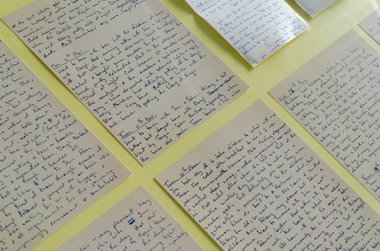
 Advertising in this column
Advertising in this column Two Rooms presents a program of residencies and projects
Two Rooms presents a program of residencies and projects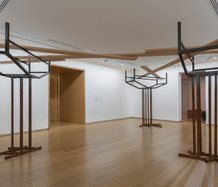
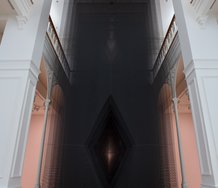
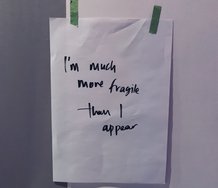
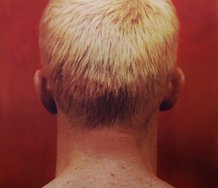
This Discussion has 18 comments.
Comment
Ralph Paine, 9:34 p.m. 16 March, 2023 #
OK, let’s turn the above text back on itself…
Mr Handscomb’s categorization of the ‘art world’ as paranoid and narcissistic is a wholly UNORIGINAL idea. In fact, it’s a cliché-to-the-max: everybody knows, if the cap fits, etc.
Ms Wynne-Jones is not interested in ORIGINALITY. Rather, she’s interested in technique, in craft (The Kraft), and so in collective enunciation. That is to say, she’s concerned with the ways of automatic literary production, recipe, tentative shared formulas and manners. Not exactly detournement a la Guy Debord, Georges Perec, et al.—for here she references her sources and does not alter her gleanings—but nevertheless a technique of the UNORIGINAL, and thus of self-effacement and an admirable humility. Yet this is not in any way a cliched manner or style. No, it is a technique of writerly collage rarely seen of late… With Lisa Robertson’s novel ‘The Baudelaire Fractal’ being another beautiful exception.
Terrence Handscomb, 1:12 p.m. 21 March, 2023 #
Ignoratio elenchi!!
Terrence Handscomb, 1:32 p.m. 21 March, 2023 #
Now read Ἀριστοτέλους περὶ δὲ τῶν Σοφιστικῶν Ἐλέγων” in the original
Ralph Paine, 12:48 p.m. 22 March, 2023 #
ON BEING TOUGH
O Enchantment!
So taken is he by the originality (for what else is “the spoken word upon first being heard” if not originary?) of the Lecturer’s spoken words that the Critic falls into a reverie, a sweet & unanchored drift… But alas, suddenly (and somehow) the Critic awakens to the fact that the Lecturer’s words are not original, that they do not belong to her, that they are the words of others. Now the lecture seems nothing but a boring and ordinary failure, all everyday trickery and deceit. Now he is hurt, wounded—he let his ‘intellectual’ guard down only to be duped by the Lecturer. Now the Critic re-toughens himself up and sets about writing an attack on the Lecturer…
. . . . . .
The term ‘ignoratio elenchi’ (i.e., a logical fallacy which consists in apparently refuting an opponent while actually disproving something not asserted) cannot be applied to my comment. In other words, my comment does not claim to refute or disprove anything Mr Handscomb either says or does not say. To the contrary, my comment is descriptive: firstly, descriptive of Mr Handscomb’s categorizations of the art world; and secondly, descriptive of Ms Wynne-Jones’ modus operandi as displayed in her lecture.
Clearly, though, I am AGAINST almost everything Mr Handscomb says in his article, but FOR Ms Wynne-Jones’ lecture. Why? Simply because I prefer craft-like experiments in self-othering and collective enunciation to arrogance and cruel forms of revenge.
Ralph Paine, 2:05 p.m. 22 March, 2023 #
Concerning the homework that Mr Handscomb has set me, all I will say is that I prefer the statement "TRANSLATION IS THE TENT OF BECOMING" to Heidegger's statement "LANGUAGE IS THE HOUSE OF BEING".
Ralph Paine, 6:09 p.m. 22 March, 2023 #
FYI, the statement “Translation is the tent of becoming” comes from Daniel Malone and Ralph Paine, ‘Autonomous Anonymous: On Becoming Whatever,’ (Auckland: Gambia Castle Press, 2008). At the opening of a recent-ish exhibition in Pitt Street, Auckland that included the Malone & Paine collaborative drawing series ‘Two Cities, One World’ I was talking with Mr Handscomb about Daniel’s and my collaboration and happened to mention the text ‘Autonomous Anonymous’. His response was—and I remember this very clearly—“I’m not interested in that sh_t.” Kinda sums things up.
JJ Harper, 8:38 p.m. 26 March, 2023 #
Victoria Wynne-Jones is boring
Ralph Paine, 8:11 p.m. 28 March, 2023 #
No Mr Harper, you're boring, Mr Handscomb is boring, EyeContact is boring, and I'm boring... Time to change it up.
John Hurrell, noon 29 March, 2023 #
I don't think Victoria Wynne-Jones or Terrence Handscomb are boring at all. (Only an Albert Camus wannabe would think that). Handcomb's distinction between a reading and a listening experience is important.
JJ Harper, 8:23 p.m. 29 March, 2023 #
But I'm the most interesting person in the world, Ralph!
Personally, I don't frequent readings because they don't feel very cool. Maybe they are cool but I'm surely not alone in that opinion. Besides writers aren't usually gifted performers. Obviously it's much cooler to write something in a lonely, mouldy bedroom and only respond to online comments!
Anyway, I doubt I'd like the text more hearing it aloud, since I don't think Victoria went to drama school.
John Hurrell, 9:21 p.m. 29 March, 2023 #
With reading her text you are aware of footnotes indicating sources. Not so with her reading her text aloud, and you listening.
Ralph Paine, 1:21 p.m. 30 March, 2023 #
That there is a difference between reading and being-read-to is a banality of thought, a cliché.
What becomes interesting, and perhaps even remarkable, is when attempts are made at exploring this between-ness. Mr Handscomb’s article is such an attempt, that is to say, it tries to explore the relation of reading/being-read-to, text/voice, writing/speaking, etc. But what’s crucial here is that it does this by overlaying the reading/being-read-to problematic with a further problematic, namely, the relation between original and copy.
OK: this is not an uncommon approach. However, in my view Mr Handscomb fails in his attempt precisely when he purports to favour one side of the relations over the other, that is to say, when he makes out to be 100% FOR originality and being-read-to and 100% AGAINST copying and reading.
All the psychobabble about art milieus, the waxing lyrical about the lived experience of some happy place, the b_tching and moaning about how hard it is to be an artist, etc. are simply meandering and uninteresting distractions from a singular and extremely bigoted polemic. Thus, three examples:
“At the same time Wynne-Jones’s reading iterated 1980s feminist thinking, which seeks to locate woman’s art in domestic milieux, but then goes on to inculcate it with the power to disassemble the remaining remnants of historical masculinity; which in my case is the expectation that all ‘ORIGINAL’ thought should at least be ORIGINAL.”
“There the story gets boring, because drinking from the sweet cup of ORIGINALITY, supping from the literary Quelle of Gilman, Sturm and Gunn, nourishes the soul with depth and authenticity in ways that piggyback-riding on the greatness of others does not.”
“Words are important and, and as far as I’m concerned, when it comes to writing and literary composition, ORIGINALITY is not an anachronism.”
Why this masculinist fixation on originality? Why this fanaticism? Guess we can only guess, because nowhere is an explanation given as to why Mr Handscomb favours originality over unoriginality. Are we just supposed to know?
But more importantly, why was Mr Handscomb unable to sustain and prolong the being-read-to EVENT by writing a joyful article? Why was he utterly incapable of relaying the EVENT into a future worthy of its happy cause? And why did the Event have to end for Mr Handscomb the moment he realised that Ms Wynne-Jones had been speaking the words of others? Aren’t all words the words of others?
JJ Harper, 3:11 p.m. 30 March, 2023 #
Terrence's writing is always a spark of joy!
Ralph Paine, 9:50 p.m. 30 March, 2023 #
Yes Mr Harper, when it comes to words anything can be turned, twisted, and tortured into a bad infinity of contraries. So yeah, if Mr Handscomb’s writing is “always a spark of joy” then I’m the King of f_cking Siam, blah, blah, etc., etc., and so on and so forth. Trouble is, all that we’re left with in this scenario is the fact that you and Mr Handscomb belong to the same club, that is to say, the club of narcissistic contrarians that in reality neither of you would want to belong to simply because neither of you could stomach belonging to any club that would accept you as members.
When it comes to choosing between narcissism and the world, always choose the world.
JJ Harper, 12:08 p.m. 31 March, 2023 #
I've been clocked. . .
Ralph Paine, 9:13 p.m. 5 April, 2023 #
On second thoughts, perhaps I should’ve written: ‘WITH CAUTION, always choose the world.’ If sometimes, in some contexts, I conceive the world as a process of self-othering, and thus as a worlding-world, I don’t regard ‘the other’ as necessarily good, loving, kind, understanding. The other may want to contradict me, defame me, put me down, destroy me, devour me … If regarded as a process, the world may ‘world’ very sad and dangerous other worlds. Hence my addition of ‘with caution’.
Clearly, with Mr Handscomb’s article and Mr Harper’s comments, Ms Wynn-Jones’ reading/lecturing has ‘worlded’ a very unkind and destructive other ‘world’, all made possible by EyeContact. My intentions, also made possible by EyeContact, are nothing but contra that other world, and thus nothing but supportive and hopefully encouraging in regard to the worlding of other possible worlds than those formed on this site by Mr Handscomb and Mr Harper: as others, I want to denounce the other world that they have formed.
This afternoon I took myself to Artspace, and what I encountered there was a very low-affect other world, with its slowly measured pulse of a gridded-up and electrified armchair (quietly killing the Father, gently putting him into a sleep from which he will never awake???), the calm, quotidian notes in mundane display cases, the uneventfully rendered, almost ordinary paintings, etc., but somehow I got it how perfectly ‘of the times’ this all felt. Perhaps what we need right now is little research worm holes to quietly wriggle through, very low-affect zones, slow and boringly affable worlds, antidotes to speed, high energy consumption, and attention deficit disorderliness.
Ralph Paine, 10:25 a.m. 6 April, 2023 #
"Awareness became aware of itself, as other: ātman-aham. The possibility of two selves, two faces, looking-eyes/looked-at-eyes, interfaces, experience of self-othering. Of possible insides and outsides, a potential entanglement, diffusion, and decentering of the self. A decentering of the other. Of the other’s other, the other’s other’s other … And the names were legion: spirit mask, persona, @, genius, demon, id, profile, tag, jinn, ventriloquist, agent, number, simulacrum, brand, password, superject, replicant, selfie, bot, effigy, sovereign, mediator, specter, geist, signature, image, avatar … Sometimes this self-othering uncoiled-recoiled via the machinic being of devices. Finally, it appeared as a device itself."
—from Shilpa of Varanasi, 'On Devices'
Ralph Paine, 2:02 p.m. 30 March, 2023 #
Or...
Aren't all words the words of others which we speak otherwise?
Or as Mr Malone and I say it: "Translation is the tent of becoming... Folding, unfolding, refolding."
Participate
Register to Participate.
Sign in
Sign in to an existing account.